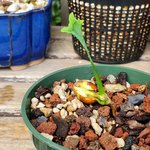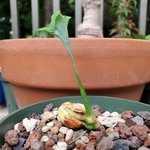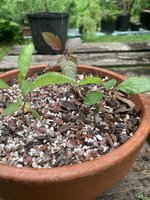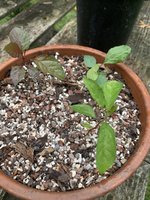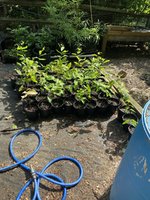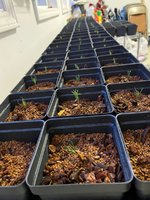palafr01
Mame
Hey everyone since so many of us grow trees from seed here I thought it would cool idea if we had a thread where everyone could share their seedlings. Given the random nature of seed growing, every so often truly weird or unique individuals show up that are extra special so if you if have any seedlings like that feel free to show them here.
With all that said I'll start us off with this oddball ginkgo seedling of mine from a batch of 240 seeds that I started this spring. It might be hard to see from the photos, but this seedling has three cotyledons on top of having its first true leaves fused together. I don't like the long term survival prospects for this seedling due to the fusion of the apical leaves, but I'm hoping more grow appears soon. Fortunately it looks like there might be some buds just above the cotyledons so maybe it will send another shoot from there.
With all that said I'll start us off with this oddball ginkgo seedling of mine from a batch of 240 seeds that I started this spring. It might be hard to see from the photos, but this seedling has three cotyledons on top of having its first true leaves fused together. I don't like the long term survival prospects for this seedling due to the fusion of the apical leaves, but I'm hoping more grow appears soon. Fortunately it looks like there might be some buds just above the cotyledons so maybe it will send another shoot from there.

